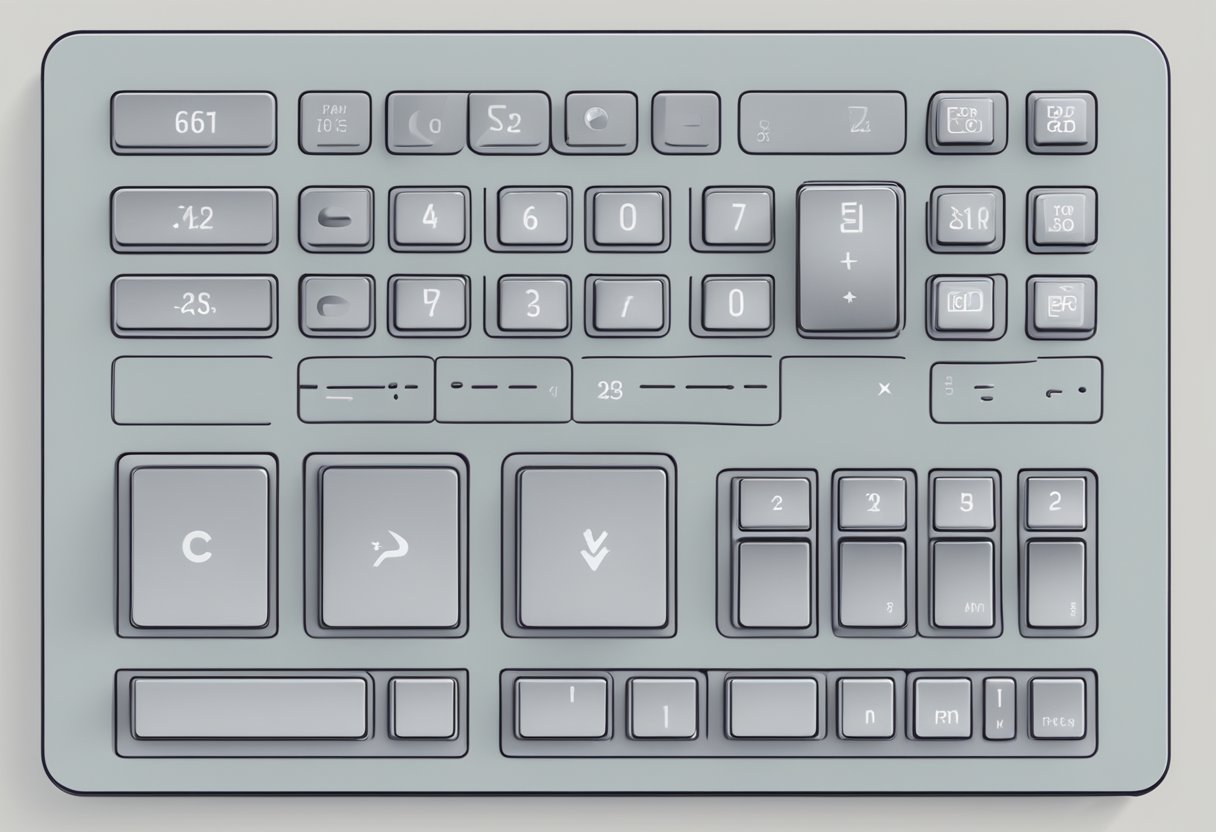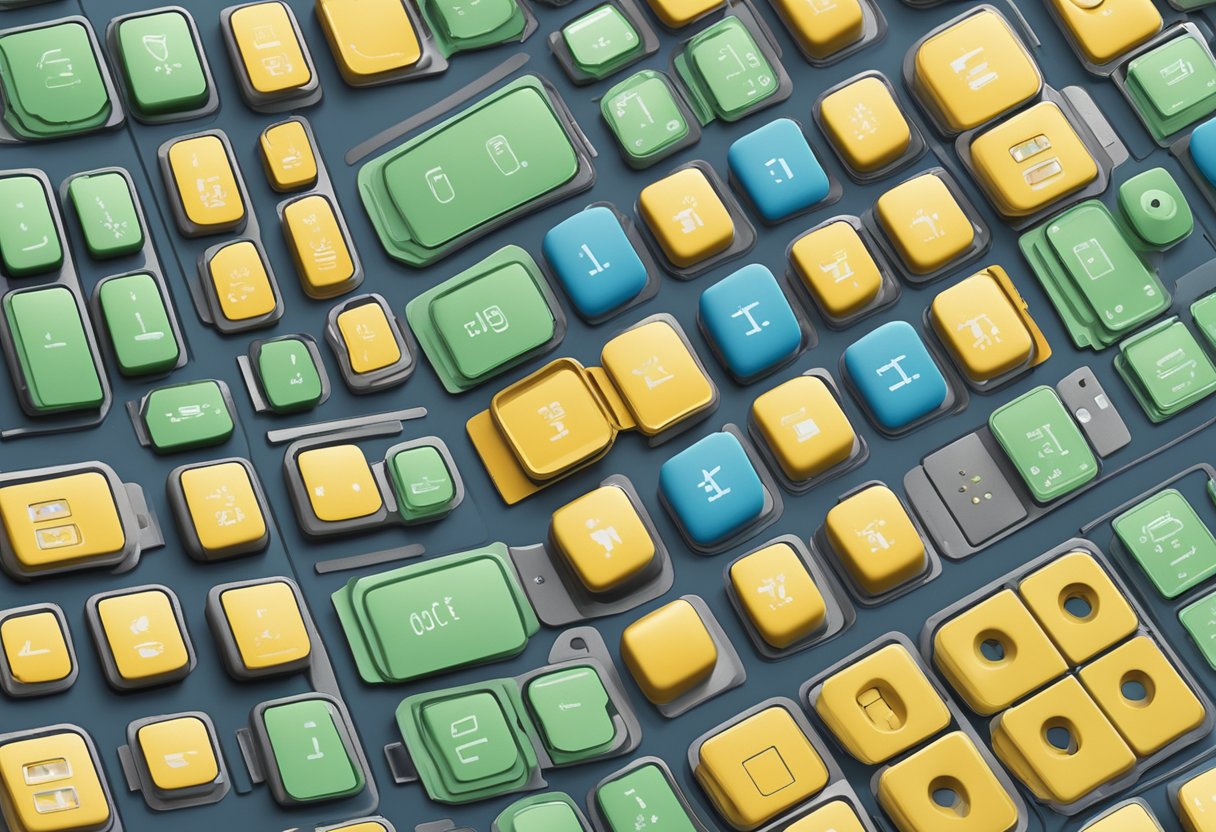Contact
Write to Us And We Would Be Happy to Advise You.
Do you have any questions, or would you like to speak directly with a representative?
By peter
If you’re looking for a simple and cost-effective way to add user input to your project, a 4×4 membrane keypad might be just what you need. These small and lightweight keypads are easy to use and can be integrated into a wide range of projects, from simple DIY electronics to more complex industrial applications.

A 4×4 membrane keypad is a type of input device that consists of a matrix of buttons arranged in a 4×4 grid. Each button is made up of a flexible membrane that contains conductive traces. When you press a button, the conductive traces come into contact with each other, completing a circuit and sending a signal to your microcontroller or other device. Because they’re made of flexible materials, these keypads are lightweight and easy to integrate into a wide range of projects.
Whether you’re building a simple calculator or a more complex control panel, a 4×4 membrane keypad can be a great way to add user input to your project. With their simple design, low cost, and ease of use, these keypads are a popular choice for hobbyists and professionals alike. So if you’re looking for a reliable and versatile input device, a 4×4 membrane keypad might be just what you need.

If you’ve ever used a calculator or typed on a keyboard, you’ve probably used a membrane keypad without even realizing it. A 4×4 membrane keypad is a type of input device that allows you to enter information into a microcontroller or other electronic system. It consists of a grid of 16 buttons arranged in a 4×4 matrix, with each button corresponding to a unique combination of a row and a column.
The buttons on a 4×4 membrane keypad are typically made of a flexible material, such as silicone, and have a conductive coating on their underside. When you press a button, it makes contact with the conductive traces on the circuit board beneath it, completing a circuit and sending a signal to the microcontroller. Membrane keypads are often used in applications where a low-profile, low-cost, and reliable input device is required.
One advantage of membrane keypads is that they are easy to customize. The graphic overlay on top of the keypad can be printed with custom legends, symbols, or icons to match the specific application. In addition, the layout of the keypad can be easily modified to suit the needs of the user. For example, a 4×4 membrane keypad can be reconfigured to act as a 3×5 keypad by adding two extra columns.
Overall, 4×4 membrane keypads are a versatile and reliable input device that can be used in a wide range of applications, from industrial control systems to consumer electronics. They are easy to use, easy to customize, and offer a cost-effective solution for many input requirements.

When it comes to designing and constructing a 4×4 membrane keypad, there are several important factors to consider. In this section, we will discuss the key layout, circuit design, and material composition of a typical 4×4 membrane keypad.
The key layout of a 4×4 membrane keypad is typically arranged in a 4×4 matrix, with each key connected to a unique combination of rows and columns. The keys are usually arranged in a rectangular shape, with the top row consisting of numbers 1 through 4, the second row consisting of numbers 5 through 8, the third row consisting of letters A through D, and the bottom row consisting of special characters such as *, 0, #, and Enter.
The circuit design of a 4×4 membrane keypad is relatively simple. The keypad is made up of a thin, flexible membrane with conductive traces on one side, and a rigid PCB with a matching set of traces on the other side. When a key is pressed, the conductive traces on the membrane make contact with the traces on the PCB, completing the circuit and sending a signal to the connected device.
To ensure reliable operation, it is important to use high-quality materials and precise manufacturing techniques when designing and constructing a 4×4 membrane keypad. The conductive traces should be made of a durable, corrosion-resistant material such as copper or silver, and the membrane should be made of a high-quality, flexible material such as polyester or polyimide.
The material composition of a 4×4 membrane keypad can vary depending on the specific application and requirements. However, in general, the keypad is made up of several layers of materials, including a top graphic overlay layer, a spacer layer, a circuit layer, and a bottom adhesive layer.
The top graphic overlay layer is typically made of a durable, scratch-resistant material such as polycarbonate or polyester, and is printed with the key labels and graphics. The spacer layer is made of a compressible material such as foam or silicone, and helps to provide tactile feedback when a key is pressed.
The circuit layer is made up of the conductive traces on the membrane, and is typically made of copper or silver. The bottom adhesive layer is used to attach the membrane to the rigid PCB, and is typically made of a high-quality, pressure-sensitive adhesive.
Overall, the design and construction of a 4×4 membrane keypad requires careful attention to detail and a thorough understanding of the specific application and requirements. By using high-quality materials and precise manufacturing techniques, it is possible to create a reliable and durable keypad that can withstand years of use.
The 4×4 membrane keypad has a switch resistance of approximately 100 ohms. This means that the resistance of the switch when it is closed is around 100 ohms. It is important to take this into account when designing circuits that use the keypad, as the resistance of the switch can affect the overall resistance of the circuit.
The contact bounce time of the 4×4 membrane keypad is typically less than 10ms. Contact bounce is the tendency of the switch contacts to bounce back and forth a few times before settling down after they have been closed. This can cause problems with the circuit if it is not taken into account. However, the contact bounce time of the 4×4 membrane keypad is short enough that it should not cause any significant issues in most applications.
The 4×4 membrane keypad typically operates at a voltage of 5V DC. This means that it can be used with most microcontrollers and other electronic devices that operate at this voltage. However, it is important to check the voltage requirements of your specific device before using the keypad to ensure that it is compatible. Additionally, it is important to note that the maximum voltage across each segment or button should not exceed 24V, and the maximum current through each segment or button should not exceed 30mA.
When it comes to integrating and interfacing a 4×4 membrane keypad, there are a few things to consider. In this section, we will discuss the different connection types and microcontroller compatibility.
There are two main types of connections for a 4×4 membrane keypad: row-column scanning and direct pin connection.
Row-column scanning, also known as matrix scanning, is the most common method of connecting a keypad to a microcontroller. This method requires fewer pins on the microcontroller and allows for multiple keys to be pressed simultaneously. When a key is pressed, it connects a specific row and column, which can be detected by the microcontroller.
Direct pin connection involves connecting each individual pin on the keypad to a separate pin on the microcontroller. This method requires more pins on the microcontroller but allows for faster response times and eliminates the need for scanning.
Most microcontrollers are compatible with a 4×4 membrane keypad. However, it is important to ensure that the microcontroller has enough available pins for the connection type you choose.
Some popular microcontrollers for interfacing with a 4×4 membrane keypad include the Arduino Uno, Raspberry Pi, and ESP8266. These microcontrollers have libraries and code examples readily available online, making it easier to get started with your project.
In conclusion, integrating and interfacing a 4×4 membrane keypad requires careful consideration of the connection type and microcontroller compatibility. By understanding these factors, you can choose the best method for your project and ensure a successful implementation.
Do you have any questions, or would you like to speak directly with a representative?